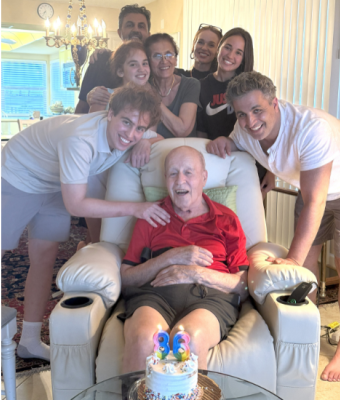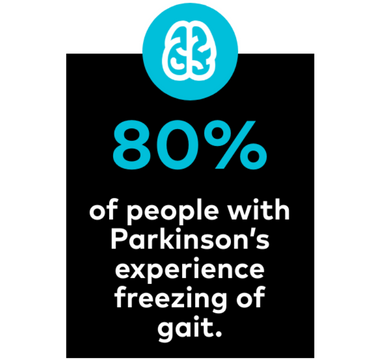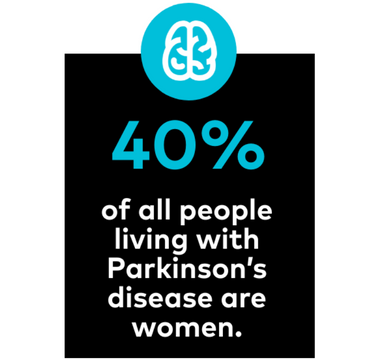6 Parkinson’s Virtual Biotech Drugs in Research & Development

“The Parkinson’s Virtual Biotech initiative is a new, much needed way the Parkinson’s Foundation can directly make targeted investments that can have potentially great impact for people with Parkinson’s today,” said James Beck, PhD, Parkinson’s Foundation Chief Scientific Officer.

Parkinson’s Virtual Biotech is the international drug discovery and development program and joint venture/partnership of the Parkinson’s UK and the Parkinson’s Foundation. This groundbreaking global effort is working to spur the development of life-changing new Parkinson’s disease (PD) treatments in years, not decades.
“These investments can exponentially advance the opportunities for new Parkinson’s medications,” said Dr. Beck. “With the support of our community, this new initiative balances our portfolio of research investments. We can now broaden our research to support every type of research from basic science to clinical studies.”
Today, Parkinson’s Virtual Biotech funds 11 new medications and therapies already in research and development stages. Here are the six new drug development programs that energize us:
Stages of Research
Scientific Discovery: Researchers identify a problem and work on solutions.
In Development: Teams turn promising discoveries into potential new treatments.
Clinical trials: New treatments are carefully tested in study participants.
1. Project Galaxy: Addressing Inflammation in Parkinson’s
Stage: In Development
This project aims to find a way to stop harmful inflammation from damaging brain cells. Inflammation is a process that is vital for defending the body against harm from things like infection, injuries and toxins. If inflammation is chronically active when it shouldn’t be — which might be the case in PD — it can cause harm to healthy cells.
Key Takeaway: This project looks to uncover a way to reduce inflammation in the brain, in the hope to protect brain cells. This could pave the way for the design of a drug to help slow or stop the condition.
2. Project Top Hat: Exploring the potential of ondansetron for treating hallucinations in people with PD or Lewy body dementia
Stage: Clinical Trial
It is estimated that around 75% of people with Parkinson’s experience hallucinations during the course of PD. However, current treatment options are limited. The drug used to alleviate nausea after chemotherapy called ondansetron (brand name Zofran) is being tested as a treatment for visual hallucinations in people with PD or Lewy body dementia.
Key Takeaway: This study is a phase 2 clinical trial with 306 people with PD or Lewy body dementia enrolled. With safety data available from ondansetron’s current use in treating sickness, positive results from this study could see this repurposed medication quickly progress to become an available treatment.
3. Project Sheffield: Optimizing molecules that restore the power plants of brain cells
Stage: In Development
University of Sheffield researchers are developing molecules that can boost the function of mitochondria (the power plants of brain cells). Over the next 12 months, the team will develop and test the drug-like molecules in cells from people with PD. If successful, the molecules will then move forward into testing, before moving into clinical trials in people with Parkinson’s.
Key Takeaway: This research takes important steps toward creating a drug that can protect dopamine-producing brain cells and slow the progression of PD.
4. Project Pharmaxis: New treatment aims to relieve PD-like symptoms and target inflammation to slow onset
Stage: Clinical Trial
Inflammation is vital for defending the body against harm from things like infection and toxins. Researchers believe that inflammation may be linked to the causes and progression of Parkinson’s. Pharmaxis is investigating whether a drug called PXS-4728 can reduce inflammation in the early stages of Parkinson’s. This study will enroll 40 people who experience the sleep disorder known as isolated rapid eye movement sleep behavior disorder (iRBD). As many as 70% of people with iRBD go on to develop Parkinson’s.
Key Takeaway: The hope is this drug might be able to slow the onset of Parkinson’s symptoms in this group of people that are at a high risk of developing the condition. This could help find a way to the slow the progression of Parkinson’s.
5. Project NRG: Targeting the power plants of brain cells to slow the progression of Parkinson’s (I-1903)
Stage: In Development
NRG Therapeutics Ltd is investigating ways to boost the functioning of mitochondria in Parkinson’s. Mitochondria (the power plants of the cell) play an important role in both sporadic and inherited forms of Parkinson’s. The aim of this project is to identify new molecules that can enter the brain and support the mitochondria.
Key Takeaway: If successful, these protective molecules could provide a safe and effective new treatment that will protect brain cells, slow the progression of Parkinson’s and extend quality of life. In 2022, NRG secured additional funding to progress toward clinical trial.
6. Project Eurofins: Creating new drugs to improve symptoms and slow Parkinson’s
Stage: In Development
Eurofins, a leading contract research company in the UK, is working to create molecules that can increase activity of a selection of genes. Dialing up the activity of these genes has the potential to increase dopamine production and boost the production of protective proteins to slow or halt the damage and loss of precious brain cells.
Key Takeaway: If successful, this could lay the foundation for research into new treatments that could not only improve Parkinson’s symptoms, but also slow, stop or even reverse the underlying condition.
Learn more about all 11 Parkinson’s Virtual Biotech drugs under research and development right now.
Related Blog Posts

Neuro Talk: Propelling a Future of New Parkinson’s Drugs Through Research
































